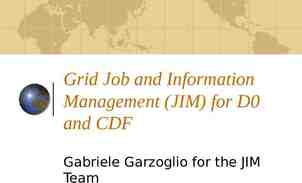Integrated Marketing Communication
42 Slides105.20 KB

Integrated Marketing Communication

IMC A planning process designed to assure that all brand contacts received by a customer or prospect for a product, service, or organization are relevant to that person and consistent over time.” Integrated marketing communications (IMC) provide an approach designed to deliver one consistent message to buyers through an organization's promotions that may span all different types of media such as TV, radio, magazines, the Internet, mobile phones, professional selling, and social media.

4 Key Principles of Integrated Marketing Consistency. Community. Cooperation. Communication.

Consistency Brand Message: The first and most important principle behind integrated marketing is consistency. Think about your brand, your company mission statement, the purpose behind your business. Everything you and your company do, say, create, and sell must be consistent across the board.

Design and style: Design and styling should also fall under this principle. When a potential customer picks up a product, reads an article, sees an advertisement, or visits a website under your company name, they should all convey a similar design scheme that defines your brand. That means using the same colors, fonts, and other visual elements to reinforce that consistency principle throughout your entire market reach. This also helps you link your various marketing platforms under a specific environment.

Customer service: The consistency principle is also crucial towards customer service. Having a centralized employee training guidebook, procedural responses toward employee concerns, and an overall uniform look to your company's staff develops a brand and reinforces positive company outlook.

2. Community Email campaigns and newsletters: A successful business marketing strategy is nothing without the customers. Companies need customers to function and grow. The problem is that many marketing strategies tend to focus on acquiring new customers, new audiences, and new markets while they forget about retaining their existing customer base. Contests, sweepstakes, viral campaigns, and guerilla marketing tactics gain quite a bit of attention but often do not increase profitability for the company.

Exclusive member benefits and events: The real money is made from all your loyal customers. That's your "community." Marketing to an established customer base costs a lot less and generates a far better ROI than attracting new audiences. You don't need to sell them on trusting you or convincing them that you sell a good product. The hard part is already over.

Surveys and reconnections: Stay connected with your existing customer base. Build your marketing strategy around them. Figure out how and why they want to stay connected and make it easy for them.

3. Cooperation In order for a company to flourish it has to work as a team. I'm not talking about communication. It's about having everyone do their part. All departments in a company must be on the same side and take whatever steps necessary to resolve an issue. In order for any successful marketing strategy to work there needs to be complete cooperation between all departments. Everyone must be on the same page and working towards the same goals. This isn't solved by having a simple office space restructuring.

4. Communication Communication is the final key principle to integrated marketing. I see this principle as an intricate web connecting everything in a marketing strategy. Without it, everything else would very quickly fall apart. A good CRM program like Salesforce is a great way to keep accurate follow-ups with customers. Not only does this help you remember outreach calls and easily pick up previous conversations, but it also helps other employees pick up the pieces should you be unavailable to do so. Just focus on minimizing the amount of communication that needs to take place in order to get something done. A customer should be able to speak directly with whoever can solve their problem. Eliminate the middle man whenever possible.

Sales Promotion Sales promotion is said to be a key ingredient in the international marketing campaign. It consists of mostly collection of those short-term incentive tools, which are designed to stimulate purchase of a particular product or service.

Reasons to use the sales promotion tools by the sales managers: (a) Increase in the number of brands and manufacturers. (b) Increase in competition. (c) Decline in advertising efficiency and increase in advertising cost. (d) Legal restraints.

Characteristics of Sales Promotion: (i) Sales promotion does not include advertisement, personal selling and publicity. (ii) Sales promotion is a tool of marketing promotion. (iii) Sales promotion encourages dealers and distributors to sell the product. (iv) Sale promotion helps in selling. (v) Sales promotion makes advertisement and personal selling easy and effective. (vi) Sales promotion activities are not regular activities. (vii) Sales promotion activities are performed at certain times. (viii) Sales promotion activities are more effective in off-seasons.

Objectives of Sales Promotion: 1. To Increase Sales Volume: Today, in the scientific age of specialization, sales promotion has become a vital need. In its absence it is useless to imagine sales increase in International Market. For the constant sales-increase it is better to determine the sales promotion programs on the basis of changing policies and to implement them with new strategies. This certainly pre-determines the scope of sales promotion. 2. To Increase the use by Present Customers: Sales promotion is also done so that the present customers may increase the use. Customers are told new methods to use the product and this is done through work demonstration and cinema. In some conditions the customers leave their old products and adopt the goods with new packing and latest improvement. The fulfilment of these needs is possible through sales promotion programmes.

3. To Introduce New Product: The main purpose of sales promotion in International Market is to introduce new product among the customers. For this purpose sales promotion plans are started. 4. To Attract New Customers: Sales promotion is also used to generate new customers in International Market. For this purpose sales promotion plans are started. These new customers raise total sales.

5. To Counter a Competitor’s Sales Promotion Device: Some products have good market. Such products do not gain much advantage by these sales promotion devices. In some conditions they have to start sales promotion plans because competitor sellers also start such plans. In these conditions sales promotional devices are started to counter the others. 6. To Assist Salesman in Selling: Sales promotion provides help in sales. Through the medium of sales promotion the institutions make the work of sellers easy and direct contact is established with the customers.

7. To Increase Goodwill: In particular conditions the institution follows sales promotion polices so that the popularity of the institution may increase. The popularity of the institution becomes firm and strong when customers are offered free gifts and prices are reduced after a fixed time. 8. To Reduce Seasonal Decline: There are some products whose demand falls badly in a particular season. The purpose of sales promotion is to reduce the seasonal decline. For example, the cold drinks companies’ start prize winning schemes to maintain their sales.

Problems of Sales Promotion in International Marketing: Therefore, following points must be considered before preparing a promotional strategy for foreign market: 1. Objectives of the Exporter: The objectives of the exporter affect the promotion decision to a great extent. A firm may have different objectives in different foreign markets. Firm’s level of commitment to international operations will determine its promotion strategy. The objective of the firm in international marketing may be to create its image on a long-term basis or it may be to maximize its cash resources or profitability in a short time.

2. Nature of the Product or Services Offered: The nature of the product or the services offered by the firm in international market is another factor that will determine the promotion strategy of exporter. Certain products are standardized and their promotional themes are also standardized. In such cases, standardized promotional strategy can be used throughout the world. 3. Financial Resources: Financial resources of the exporter is one of the main factors in deciding the promotion policy. A firm, not having sufficient financial strength, cannot use a strategy involving a heavy expenditure. As against this, a firm having a good financial background may use any method which may prove useful to the firm.

4. Media Availability: A medium which is easily available in domestic country need not necessarily be available in the foreign market. Though one may generalise that identical media are available in most industrialised countries, one should keep in mind that they may vary in institution, quality and communications value. In such circumstances, the promotional message, theme and other properties of the media may be adjusted. But the task of international marketer is compounded where a certain type of media is just not available.

5. Environmental Constraints: The exporter firm should evaluate the environmental factors like the level of economic development of a country, the disposable income of the people, consumers’ preferences and attitudes towards advertising and sales presentation, competitor’s promotion strategies and the legal requirements in a particular foreign market. (i) Cultural Environment:(ii) Legal Constraints:(iii) Purchasing Habits: (iv) Cost of Promotion:(v) Infrastructure(vi) Language Factor: (vii) Domestic Regulations(viii) Competitors’ Promotional Strategy:

Public relation International PR in this context means embarking on a PR campaign that is geographically far reaching and is inclusive of the potential markets and end users with whom your business wants to connect. Efforts to establish mutually beneficial relations with the publics of other nations. International relations involves the study of such things as foreign policy, international conflict and negotiation, war, nuclear proliferation, terrorism, international trade and economics, and international development, among other subjects.

Key elements: Know your target audience. Understanding the target audience is the most important part of any successful public relations strategy. . Set realistic goals. Think about what you hope to achieve with your brand, and when. . Develop a message. . Know your competition. . Stay relevant.

seven step process to consider when planning to run international PR: Normal PR rules still apply. . Research the market. . Tailor your PR content. . Focus on building relationships with key international media. . International PR network. . Use online PR to your advantage. . Get your voice heard.

International Advertising International advertising can be defined as a subfield in advertising and international marketing that studies the differences and similarities in advertising across different nations and how one country's advertising overseas affects the other country.

Advertising objective and goal Product Attribute and benefit segmentation Production and cost limitations: Different cultures often seek the same value or benefits from the primary function of a product. - The ability of an automobile to get from point A to point B. -A camera to take picture. -A wrist watch to tell time. But while usually agreeing on the benefit of the primary function of a product, consumers may perceive other features and psychological attributes of the item differently.

Example: 1 In United states: Excellent pictures with easy operation are expected by most of the market. Germany and Japan: A camera must take excellent pictures, but the camera must also be state of the art in design. In Africa: where penetration of cameras is less than 20 percent of the households, the concept of picture taking must be sold. In all three markets, excellent pictures are expected (i.e., the primary function of a camera is demanded), but the additional utility or satisfaction derived from a camera differs among cultures. Many products produce expectations beyond the common benefit sought by all.

Example: 2 Dannon’s brand of yogurt promotes itself as the brand that understands the relationship between health and food, but it communicates the message differently, depending on the market. In the United States: Dannon yogurt is seen as a healthy, vibrant food, the brand celebrates its indulgent side. In France: Dannon was seen as too pleasure oriented.

Regional segmentation To avoid the confusion that results when a market is exposed to multiple brand names and advertising messages, as well as for reasons of effi ciency, companies strive for harmony in brand names, advertising, and promotions across . Along with changes in behavior patterns, legal restrictions are slowly being eliminated, and viable market segments across country markets are emerging.

Global Advertising and the communication Process: In the international communications process, each of the seven identifi able steps ultimately can affect the accuracy of the process. The process consists of the following: 1. An information source. An international marketing executive with a product message to communicate. 2. Encoding. The message from the source converted into effective symbolism for transmission to a receiver. 3. A message channel. The sales force and/or advertising media that convey the encoded message to the intended receiver. 4. Decoding. The interpretation by the receiver of the symbolism transmitted from the nformation source.

5. Receiver. Consumer action by those who receive the message and are the target for the thought transmitted. 6. Feedback. Information about the effectiveness of the message that fl ows from the receiver (the intended target) back to the information source for evaluation of the effectiveness of the process. 7. Noise. Uncontrollable and unpredictable influences such as competitive activities and confusion that detract from the process and affect any or all of the other six steps

Creative Challenges: 1.Legal constraints: Laws that control comparative advertising vary from country to country. In Germany: it is illegal to use any comparative terminology; you can be sued by a competitor if you do. In Asia, an advertisement showing chimps choosing Pepsi over Coke was banned from most satellite television; the phrase “the leading cola” was accepted only in the Philippines. Advertising on television is strictly controlled in many countries.

China is relaxing some regulations while strengthening others. For example, recently the government began to require concrete proof of ad claims and banned pigs in advertising—the latter in deference to its Muslim minorities. While the Chinese government is doing little to regulate product placement advertisements, the European Union limits product placement in foreign programming but not EU-produced material. In Kuwait, the government-controlled TV network allows only 32 minutes of advertising per day, in the evening. Commercials are controlled to exclude superlative descriptions, indecent words, fearful or shocking shots, indecent clothing or dancing, contests, hatred or revenge shots, ethnic derision, and attacks on competition. Russian law forbids subliminal advertising, but it is still prevalent there

2.Linguistic Limitations: Language is one of the major barriers to effective communication through advertising. The problem involves different languages of different countries, different languages or dialects within one country, and the subtler problems of linguistic nuance, argument style,vernacular, and even accent. Incautious handling of language has created problems in all countries. 21 Some examples suffi ce. Chrysler Corporation was nearly laughed out of Spain when it translated its U.S. theme that advertised “Dart Is Power.” To the Spanish, the phrase implied that buyers sought but lacked sexual vigor.

” A company marketing tomato paste in the Middle East found that in Arabic the phrase “tomato paste” translates as “tomato glue.” In Spanish-speaking countries, you have to be careful of words that have different meanings in the different countries. The word ball translates in Spanish as bola, which meansball in one country, revolution in another, a lie or fabrication in another and an obscenity in yet another. Most recently, the product name iPad has raised issues around the world. Even in the United States, women refl exively relate the word “pad” to hygiene products. In Ireland consumers complain that the names iPod and iPad sound exactly the same, and Japanese does not have a sound for the letter “a” in iPad. Adding injury to insult, but in a legal way, other companies in the United States, Switzerland, and Japan already have trademarks for the name. 22

In Ireland consumers complain that the names iPod and iPad sound exactly the same, and Japanese does not have a sound for the letter “a” in iPad. Adding injury to insult, but in a legal way, other companies in the United States, Switzerland, and Japan already have trademarks for the name.

Cultural Diversity The problems associated with communicating to people in diverse cultures present one of the great creative challenges in advertising. One advertising executive puts it bluntly: “International advertising is almost uniformly dreadful mostly because people don’t understand language and culture.” Communication is more difficult because cultural factors largely determine the way various phenomena are perceived. If the perceptual framework is different, perception of the message itself differs For example, marketing researchers in Hong Kong found that cheese is associated with Yeung-Yen (foreigners) and thus rejected by some Chinese. Toyota introduced the Prado SUV in China only to learn that the name sounded like the Chinese word for “rule by force.” This name reminded some Chinese of the 1937 invasion by Japan—not a nice memory at all.

Procter & Gamble’s initial advertisement for Pampers brand diapers failed because of cultural differences between the United States and Japan. Procter & Gamble’s initial advertisement for Pampers brand diapers failed because of cultural differences between the United States and Japan. A U.S. commercial that showed an animated stork delivering Pampers diapers to homes was dubbed into Japanese with the U.S. package replaced by the Japanese package and put on the air. To P&G’s dismay, the advertisement failed to build the market. Some belated consumer research revealed that consumers were confused about why this bird was delivering disposable diapers. According to Japanese folklore, giant peaches that float on the river bring babies to deserving parents, not storks.

Media Limitations Media are discussed at length later, so here we note only that limitations on creative strategy imposed by media may diminish the role of advertising in the promotional program and may force marketers to emphasize other elements of the promotional mix. A marketer’s creativity is certainly challenged when a television commercial is limited to 10 showings a year with no two exposures closer than 10 days, as is the case in Italy. Creative advertisers in some countries have even developed their own media for overcoming media limitations. In some African countries, advertisers run boats up and down the rivers playing popular music and broadcasting commercials into rural areas as they travel.

Production and Cost Limitations Creativity is especially important when a budget is small or where there are severe production limitations, such as poor-quality printing and a lack of high-grade paper. For example, the poor quality of high-circulation glossy magazines and other quality publications in eastern Europe has caused Colgate-Palmolive to depart from its customary heavy use of print media in the West for other media. Newsprint is of such low quality in China that a color ad used by Kodak in the West is not an option. Kodak’s solution has been to print a single-sheet color insert as a newspaper supplement.







